
Growing Campanulas in a pot
to successfully grow campanula on your terrace or balcony
Contents
The campanula is a lovely floriferous and hardy perennial that makes it an essential plant in the garden. It captivates gardeners with its delicate bell-shaped or star-shaped flowers. Easy to grow and hardy, Campanula is suitable for all uses: as groundcover, in a perennial plant bed, in a rockery, as well as in pots and window boxes. Highly decorative, it is perfect for enhancing a terrace or balcony with its abundant summer flowering. Discover everything you need to know to successfully grow campanula in pots.

Campanula poscharskyana in a window box
When to plant a campanula in a pot?
For a successful planting, we recommend repotting campanulas in early spring, from March to April, or in autumn from September to November. These two periods are perfect for gentle hardening and promote rooting. Avoid planting during frosty periods or summer heat.
Read also
6 blue and violet CampanulasWhat type of pot to choose?
Before choosing a container, there is an essential rule for a campanula: the compost must always remain moist but well-drained. Therefore, choose a pot, planter, or hanging basket with built-in drainage. If the pot does not have a drainage hole, drill 2 to 3 holes 4 cm from the bottom. Indeed, excess moisture can cause the roots of your campanula to rot.
Campanulas are not very demanding regarding the size or depth of a pot, especially the smaller varieties. You therefore have plenty of options. For larger varieties of campanulas, prefer a pot with a diameter of at least 30 cm.
Discover other Campanula - Bell Flower
View all →Available in 0 sizes
Available in 0 sizes
Available in 2 sizes
Available in 0 sizes
Available in 0 sizes
Available in 2 sizes
Available in 0 sizes
Available in 1 sizes
Available in 1 sizes
Available in 2 sizes
What type of substrate to choose?
All campanulas appreciate a well-drained and light substrate. For good water drainage, place a layer of clay balls at the bottom of your pot or window box.
Mix 2/3 of potting soil for flowering plants with 1/3 of pumice to obtain a light and draining substrate. You can also replace the pumice with garden sand, perlite, or gravel.
Note: there are also light potting soils or potting soil for Mediterranean plants that already contain perlite. They are both light and draining, making them perfectly suitable.
Read also
Pink bellflowersWhat exposure do campanulas need?
Most campanulas prefer a sunny or partially shaded position. Flowering is generally more abundant in full sun, but the colour of the flowers is usually paler.
If you live in a hot region, avoid exposure to scorching sun. Indeed, campanula is sensitive to drought and excessive heat. It thrives in areas where summer nights remain cool.
If your terrace or balcony is shaded, choose a suitable variety such as Campanula poscharskyana or Campanula takesimana.
Which campanula to choose?
Even though all campanulas can be easily grown in pots, we have selected some of the most beautiful varieties that will attract all eyes.
In a planter, you can install the stunning Campanula ‘fluette Elizabeth Oliver’, whose small, very double blue flowers resemble the roundness and delicacy of roses.
The lovely Campanula poscharskyana ‘Trollkind’ is also ideal for planters and for decorating a hanging basket where its floral stems will gracefully cascade.
To enhance a pot, you can plant the Campanula punctata ‘Rubriflora’, which will form a lovely bush with dark green foliage and beautiful large purple-pink flowers. You can also opt for its cousin, the Campanula punctata ‘Pantaloons’ with its very original semi-double flowers in mauve-pink tones. And if you prefer intense blue, the Campanula ‘Sarastro’ will charm you with its long, elongated bells.
For growing in a container or large pot, you can install perennial varieties reaching heights of 80 cm to 1 m, such as the Campanula lactiflora ‘Prichard’s variety’ or the Campanula lactiflora ‘Loddon Anna’. With its 1 m height and large starry white flowers, the Campanula pyramidalis ‘Alba’ is also hard to miss. This last variety is biennial but self-seeds easily.
How to care for a campanula in a pot?
Watering
Campanula plants appreciate a cool, well-drained substrate. They are sensitive to excess moisture as well as drought. Water thoroughly once a week. To check if your campanula needs watering, insert your finger 2 to 3 cm into the compost to assess the moisture. If the soil feels dry, water generously. In hot weather, increase the frequency of watering to keep the substrate cool. You can add a mulch around your campanula to help retain moisture in the substrate for longer.
Staking
Tall varieties, such as Campanula pyramidalis ‘Alba’, may require staking. Indeed, the flower stems can fall over in strong winds or heavy rain.
Wintering
Hardy and generally deciduous, potted campanulas cope well with winter outdoors and do not require protection. In montane regions and in the event of late frosts, you may wish to protect your campanula with a winter fleece to avoid damaging the flower buds.
Repotting and Fertiliser Application
The campanula will need repotting every 1 to 2 years to refresh its substrate. To encourage flowering, you can apply organic fertiliser in the form of blood meal, humus, or potting fertiliser. Start this application in spring and continue through summer, at a rate of once a month.
Pruning and Flowering of Campanulas
To encourage prolonged flowering, especially for repeat flowering varieties, we recommend removing faded flowers. This will also encourage the plant to branch out.
For further reading
- Discover all our campanula varieties.
- To learn everything about campanulas, check out our guide on planting, cultivation, and maintenance.
- Subscribe!
- Contents





































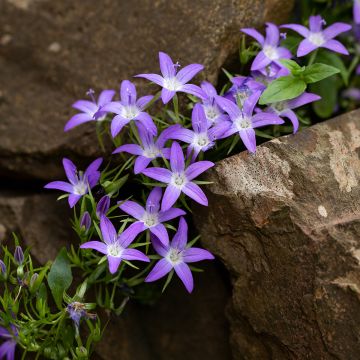
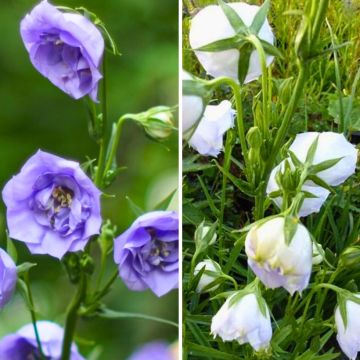
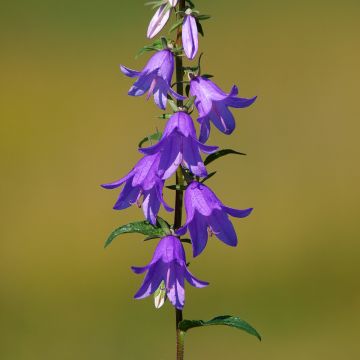

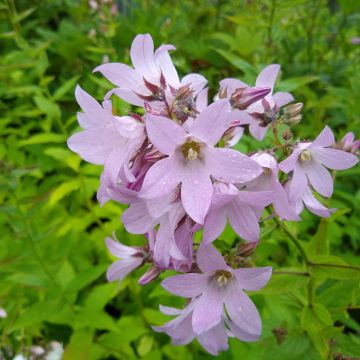
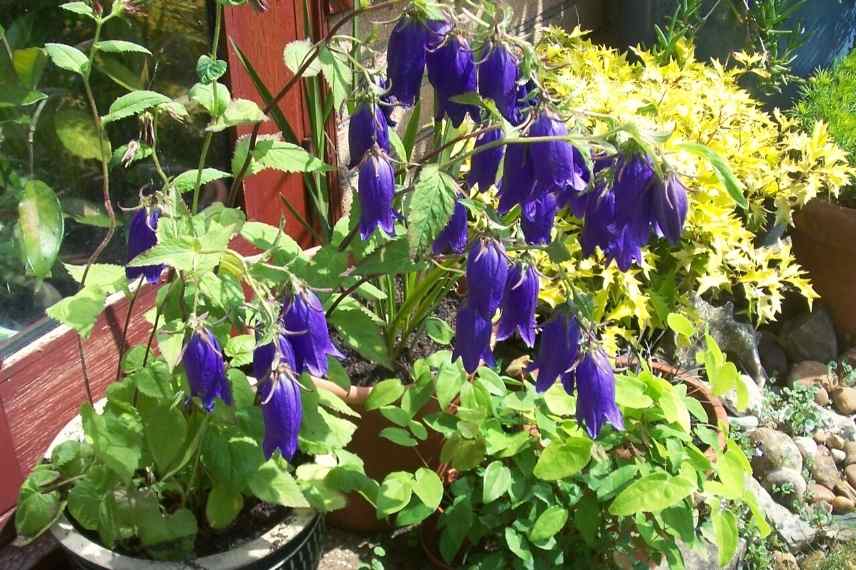


Comments